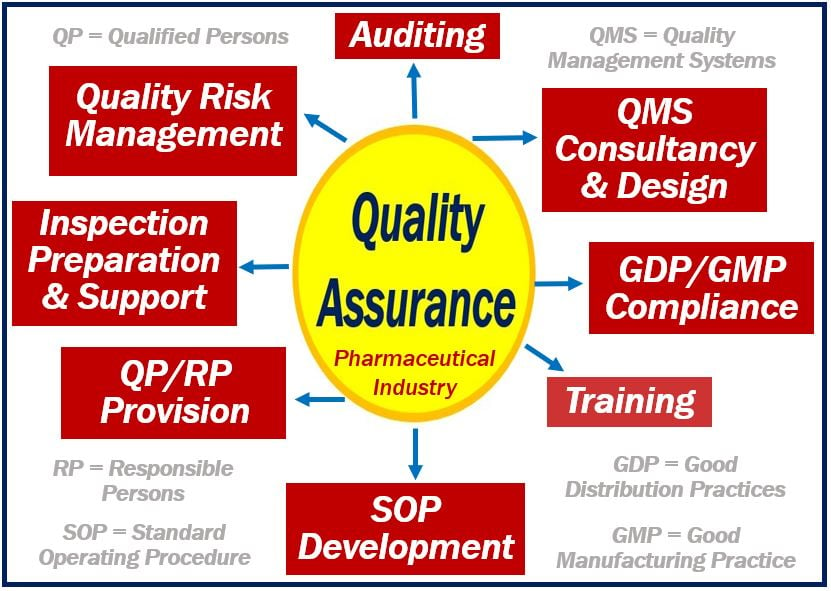What is quality assurance? Definition and examples
Quality assurance is a part of quality management that makes sure that everybody is doing everything properly in every stage of the production process. Quality assurance emphasizes the importance of consistent adherence to specified standards and guidelines to ensure optimal outcomes in the end product. It is a way of preventing errors or defects in manufactured goods or services.
It is the maintenance of a desired level of quality in a good or services. ‘Good‘ in this context means ‘product.’ Quality assurance monitors every stage of the process of production and delivery.
Merriam-Webster has the following definition of the term:
“A program for the systematic monitoring and evaluation of the various aspects of a project, service, or facility to ensure that standards of quality are being met.”
A quality assurance system aims to boost customer confidence. It also attempts to improve the company’s credibility. Additionally, it focuses on improving work processes and efficiency so that the company can compete with rivals more effectively.
QA is similar to quality engineering. However, while QA focuses just on monitoring and fixing, quality engineering also includes devising (creating) the system.
Quality
The word ‘quality’ refers to how good something is. It contrasts with the word ‘quantity.’
If somebody says ‘how much‘ or ‘how many,’ they are referring to quantity. If, on the other hand, they say ‘how good,’ or ‘how well,’ they are referring to quality.
Quality assurance – part of quality management
Quality assurance (QA) is part of quality management, which refers to everything a company does to make sure that it produces and delivers its goods and services to specifications and at the appropriate cost.
People who work in quality management pay attention to product and service quality and also the means to achieve it. Four main components make up quality management: 1. Quality planning. 2. Quality control. 3. Quality assurance. 4. Quality improvement.

Quality assurance (QA) vs. quality control (QC)
Although QA and QC are closely related, they are quite different.
QA focuses on the process – it tries to prevent defects or errors. QC, on the other hand, focuses on the product – it identifies defects.
Here is a good explanation of the difference between the goals of QC and QA by Diffen.com:
“The goal of QA is to improve development and test processes so that defects do not arise when the product is being developed.”
“The goal of QC is to identify defects after a product is developed and before it’s released.”
A managerial vs. a corrective tool
QA is a managerial tool. QC, on the other hand, is a corrective tool.
Quality assurance – zero defect approach
QA is an approach that attempts to achieve quality by getting it ‘right first time.’ In other words, preventing defects or mistakes from happening in the first place. Some people refer to this as the ‘zero defect’ approach.
There is more emphasis on self-checking in QA, rather than inspectors breathing down a worker’s neck.
Advantages
According to tutor2u.net, advantages of QA include:
- Lower costs due to less wastage and re-working of defective products because checking occurs at every stage.
- As workers have more ownership and recognition for what they do, there is usually better employee motivation.
- As it eliminates the feeling of bosses checking on workers, it helps break down the ‘us and them’ barriers.
- With everybody responsible for quality, the company can gain marketing advantages that arise from its consistent quality levels.
DesigningBuildings.co.uk says the following regarding QA:
“Quality assurance is a way of preventing mistakes or defects in manufactured products and avoiding problems when delivering solutions or services to customers.”
“This defect prevention in quality assurance differs subtly from defect detection and rejection in quality control, and has been referred to as a shift left as it focuses on quality earlier in the process.”
Video – What is Quality Assurance?
In our sister channel in YouTube, ‘Marketing Business Network,’ you can watch this video about Quality Assurance.

